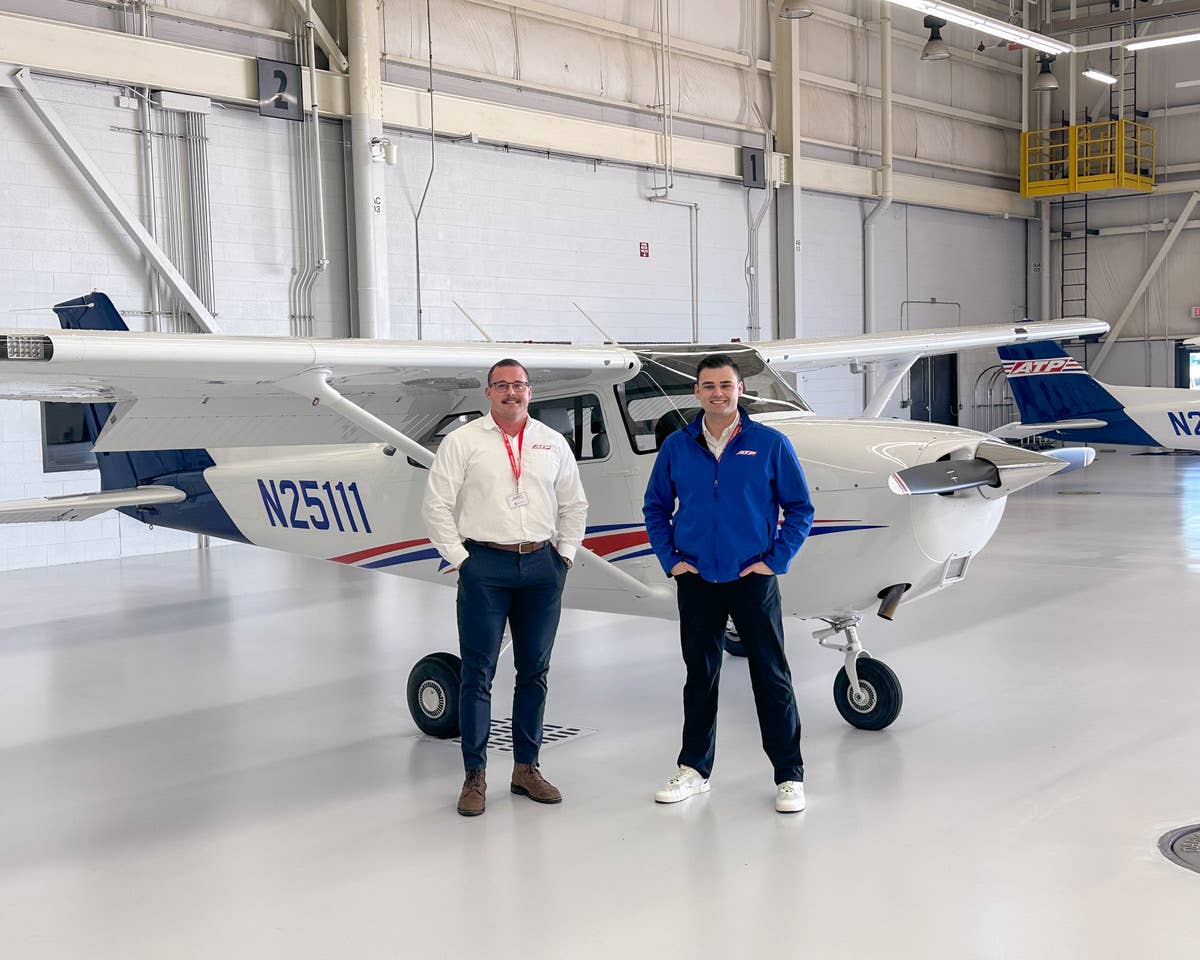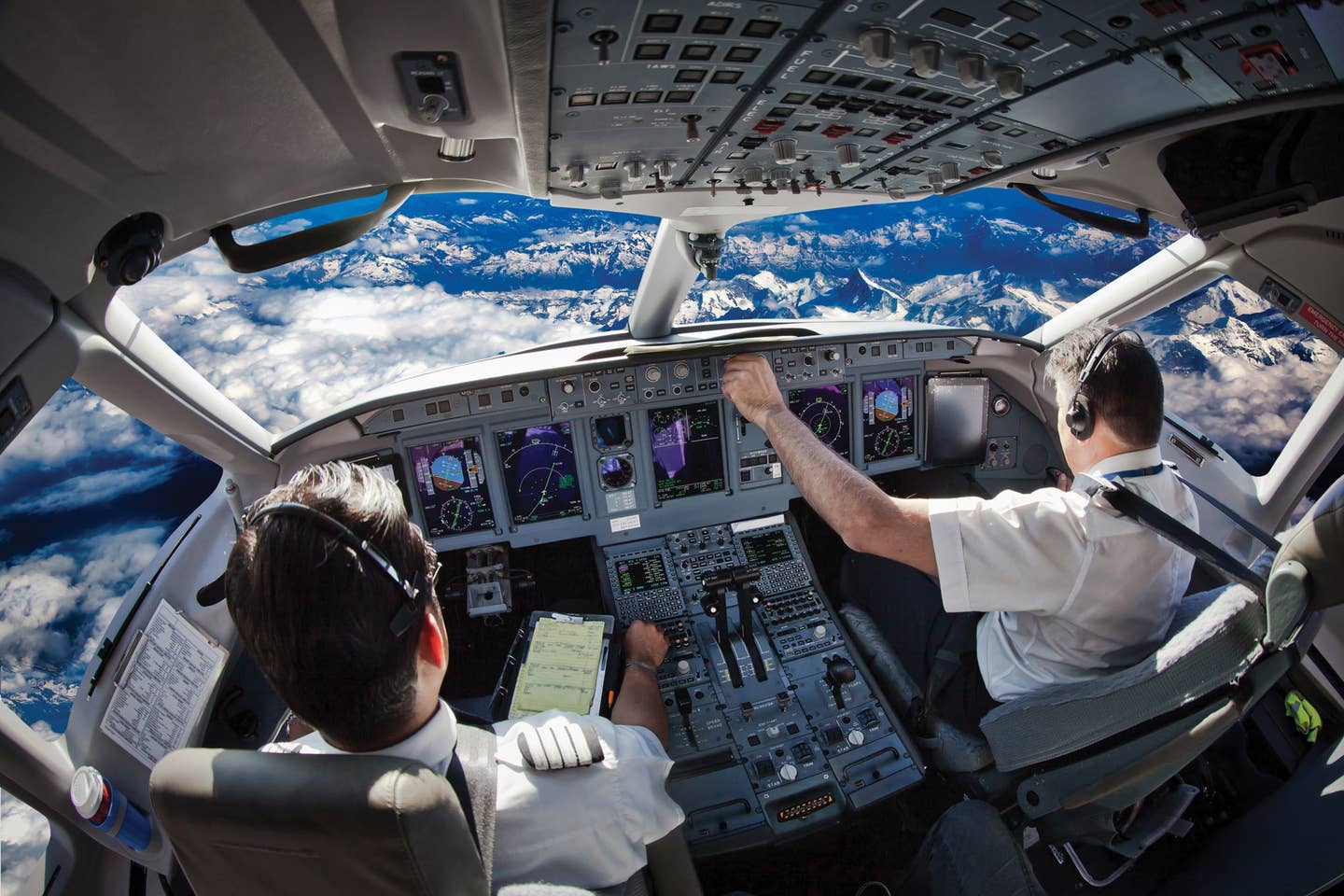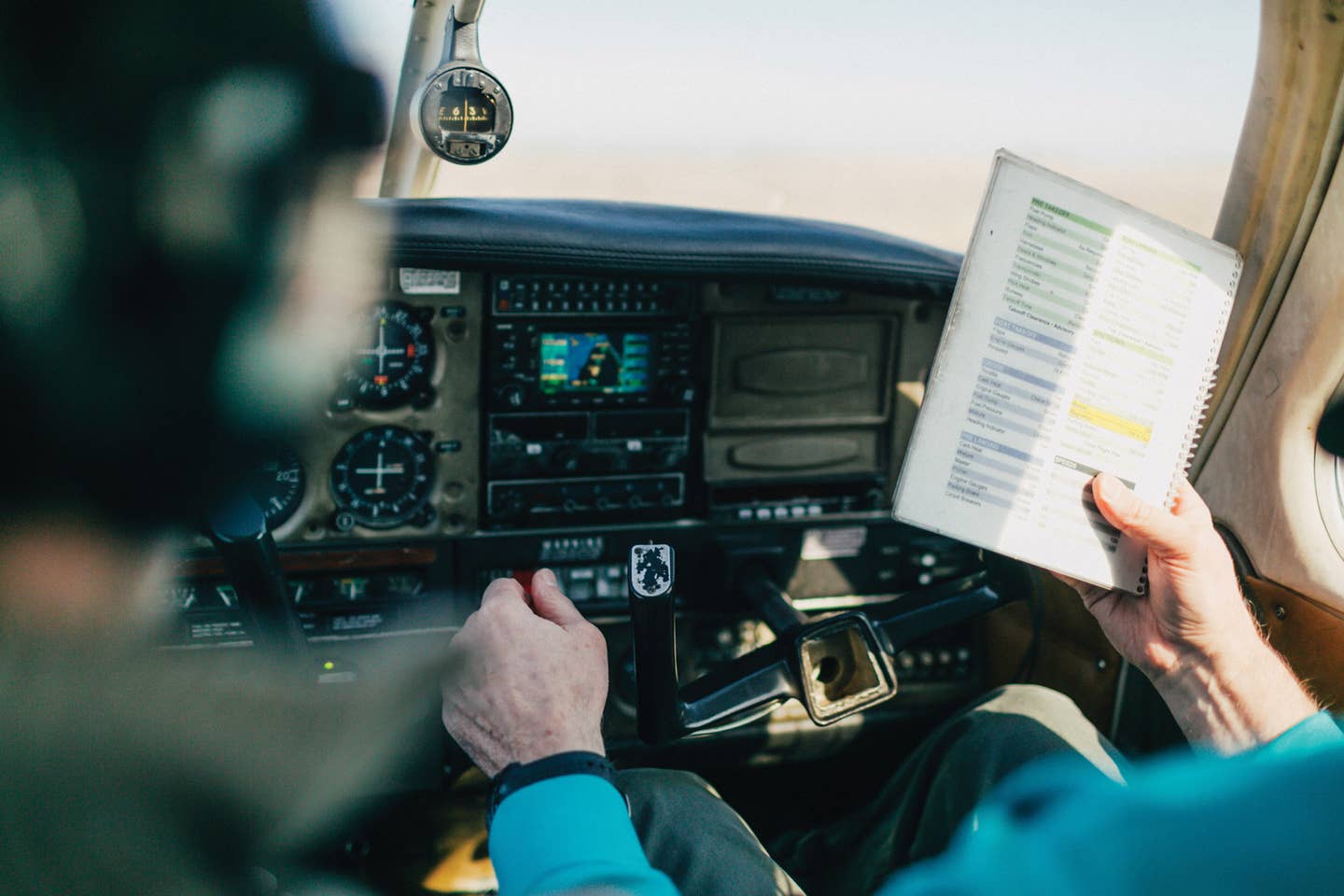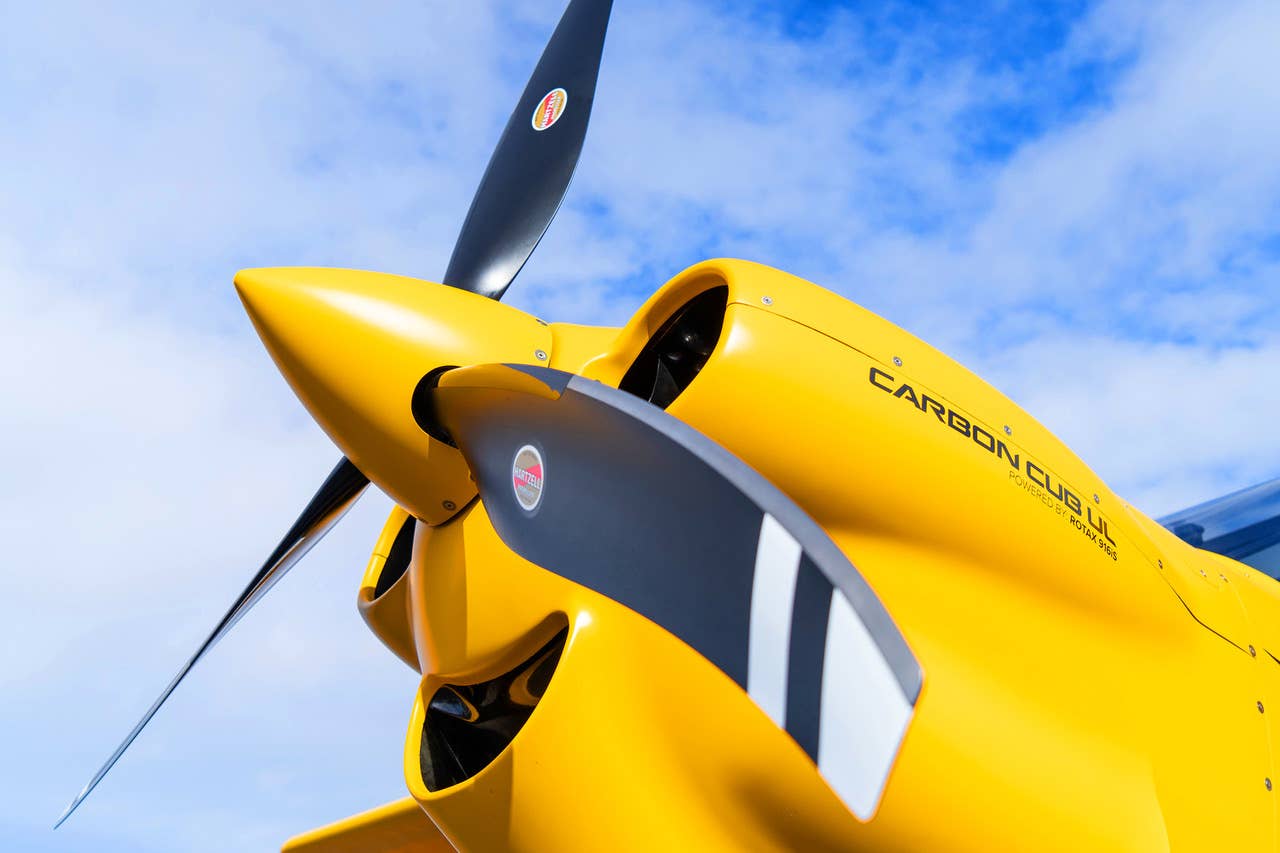Flying The Friendly Skies: No Better Time!
This may be the perfect time to achieve your aviation dream
 Success in aviation always has been a matter of perspective. Student pilots hoping for an airline career in the '50s attributed their lack of success to the oversupply of military pilots emerging from the Korean War. Pilots in the '60s said that ex-military pilots had the run of jobs, and that social and economic turmoil made the outlook grim for a sustained airline career. Flight students in the '70s blamed the economy and the reduction of cockpit crews from three to two for making a professional pilot job a poor career choice. Yet those decades were considered some of the most lucrative years for pilots.
Success in aviation always has been a matter of perspective. Student pilots hoping for an airline career in the '50s attributed their lack of success to the oversupply of military pilots emerging from the Korean War. Pilots in the '60s said that ex-military pilots had the run of jobs, and that social and economic turmoil made the outlook grim for a sustained airline career. Flight students in the '70s blamed the economy and the reduction of cockpit crews from three to two for making a professional pilot job a poor career choice. Yet those decades were considered some of the most lucrative years for pilots.
In the years following WWII through the late 1980s, professional pilots quietly enjoyed the best decades of flying in history. From the "golden era" of DC-3s to the modern jet age, those who persevered and followed their passion for flight ended their careers on the highest of notes: enjoying six-figure retirements, unmatched medical benefits, and the still-bright patina of wearing pilot's wings and "flying the line."
For some, flying is simply in their blood. Economic conditions won't steer them away from a career in the sky. Like the pilots who previously trudged forward, pilots who follow their passion can choose a career that will reward them like no other profession.
So what's the current outlook for getting hired into a professional cockpit? Is becoming a pilot a good career choice?
Where Aviation Stands Today
To understand where aviation is going, we have to examine where it is today, so let's get the gloom out of the way: 2009 was the worst year for pilot hiring since 1975, and if the trend continues through the end of the year, it will go down as the worst year for pilot hiring in history.
To gain some perspective, 175 airline pilots were hired in 1975. At this writing, 2009 has three months to go, and thus far, only 30 pilots have been hired. Those numbers include airline carriers and freight haulers, as well as charter and fractional operations. Foreign airlines---recently a bright spot for prospective pilots---went from hiring 3,000 new pilots yearly to less than 100.
Unique economic conditions and regulatory changes all have conspired to create this dip---okay, let's call it a dive---in pilot hiring. The main culprits were oil prices, the broad economic collapse and its effect on global economies, and the increase in pilot retirement age from 60 to 65. Even without a detailed examination of each cause, it's clear that 2009 wasn't the best time to look for a job in the cockpit.
Where Aviation Is Going
There's actually great comfort in hitting bottom---there's nowhere to go but up, and such is the case with aviation. Any good investment counselor will tell you that millionaires are made in times of economic depression. "Buy low, sell high" is the investor's mantra, and the parallel extends beautifully to aviation. This is actually a fantastic time to begin training to become a professional pilot, and by examining the reasons, we can see the brighter years ahead.
Louis Smith is chairman and president of FltOps (www.fltops.com), a company that organizes and provides information to prospective professional pilots. Information is Smith's business, and he has his hand squarely on the pulse of aviation. Smith is the founder of Future Aviation Professionals of America (FAPA) and is a retired Northwest Airlines captain and U.S. Air Force pilot. He's an industry expert on aviation careers and regularly provides aviation hiring statistics and projections to everyone from career pilots to CNN and NPR.
"These cycles will drive you crazy," he says, "but the fact remains that we're in a time of transition---a historic low. Hiring for professional pilots will increase, and there are several reasons." Smith talks specifically about several areas that may be misunderstood by the general public: "Remember that the ’age 65 rule' squeezed out some younger pilots from getting hired, but most of those older pilots won't stay until they're 65. We're seeing that most don't stay beyond about 62. That five-year window is closing fast."
In addition to a large pool of soon-to-retire pilots, global growth will increase pilot demand. According to the FAA, domestic airlines now move about 750 million passengers yearly. It projects that by 2015, this number will grow to one billion yearly. Worldwide airline travel is predicted to grow about 7% yearly, with cargo operations growing by 4% to 6% per year. By 2020, Asia is projected to become the dominant air cargo market. The recent industry-wide transition away from 50-passenger regional jets (due to their inefficiency) means new airplanes and more pilots. Overall, according to the Air Line Pilots Association (ALPA), worldwide air traffic is expected to triple in the next 25 to 30 years.
"Growth in the airline industry won't happen overnight," says Smith, "but long-term, it will grow." The International Civil Aviation Organization (ICAO), a respected source for air travel statistics and projects, says that even in light of world economic turmoil, transpacific air traffic will likely increase at a rate of nearly 6% yearly through 2015. China has several large airliners on order, with even more forecast. The prospect of tremendous growth in the Asian markets opens a world of opportunities for pilots willing to live in countries served by Asian airlines.
Changes On The Horizon
In terms of professional aviating's future, exciting changes are in store. The last decade has seen the introduction of the Joint Aviation Authorities (JAA) Flight Crew Licensing (FCL) for pilots operating aircraft in Europe. The year 2010 and beyond also will bring sweeping changes to domestic cockpits.
On September 23, 2009, Captain John Prater, president of the ALPA, the world's largest pilot union, spoke before the House Subcommittee on Aviation regarding the FAA's "Call to Action on Airline Safety and Pilot Training." He recommended sweeping changes in the way pilots are trained and how they fly in the U.S. Prater suggested the formal adoption of the "Code of Ethics and Canons" (a set of standards of professionalism for pilots) into airline training programs, and recommended changes in training standards so pilots are trained far beyond FAA minimums. Suggested changes include implementing "safety management systems," nonpunitive sick-/safety-reporting programs, revised cockpit procedures and ground operations to reduce distractions, pilot mentoring, greater management responsibility for safety, and enhanced simulator training standards. ALPA also suggests new duty standards to reduce pilot fatigue and enhance safety.
In the future, monitoring pilot performance on checkrides and in the long term also will become an area of focus, as will new "professional development programs" for university-based training programs.
Professional pilots will see the introduction of new, more efficient aircraft to replace the 50-seat jets being parked in the desert by regional carriers. Boeing and Airbus will continue to enhance their long-haul and "super" jets, and the skies increasingly will be filled with VLJs and higher-efficiency turboprops. As airlines enjoy the increased revenue of "a-la-carte" pricing for such things as meals and extra bags, they'll introduce more routes and destinations. Biometric screening is expected to all but eliminate security waits at large airports, and reduced delays are expected to make airline travel more pleasant. In all, the industry is predicting "friendlier skies."
Getting There
Pathways to the professional cockpit haven't changed much, but the characteristics have. The military is no longer a rich source for pilots. Reductions in budgets, changes in threat profiles, small skirmishes around the world and unmanned aerial vehicles (UAVs) have changed the face of military aviation. Combined, the military graduates only a small fraction of the pilots it did during the heyday of the 1950s through the 1980s.
Today, prospective professional pilots can choose to train at dedicated flight academies, or they can attend universities with programs that combine a degree in aviation-related fields with top-notch flight training. Additionally, friendly neighborhood fixed-base operators (FBOs) can happily take pilots through most of their ratings.
The long and short of it is that now is a great time to begin training for a professional cockpit. To keep all this in perspective, remember that a short 24 months ago, the industry was gripped by a pilot shortage so severe that regional airlines were lowering their minimums to 250 hours, total time. The talk then was of how to retain flight instructors because they were all being recruited away by the airlines. The aviation industry is and always has been volatile. But if your dream is to fly, now is the time to take action. "This has been a tough lesson for this generation," comments Louis Smith. "But it's great because, in the aviation industry, there are no pessimists left."
| A Gift From Uncle Sam! The new GI Bill offers unprecedented training and education---especially for aviators |
| On August 1, 2009, comprehensive and sweeping changes to the U.S. government's GI Bill took effect. The new "Post-9/11 GI Bill" introduces the most extensive educational-assistance opportunity since the original bill was passed in 1944. In essence, the new bill allows every eligible veteran, service member and reservist an opportunity to receive an undergraduate education at a public institution, at no cost. For those interested in an aviation career, the new GI Bill is a dream come true.
The basics of the new GI Bill establish financial support for graduate/undergraduate degrees and vocational/technical training for individuals with at least 90 days of military service on or after September 11, 2001. It also covers individuals discharged with a service-connected disability after 30 days. Veterans must have received an honorable discharge to be eligible for the Post-9/11 GI Bill. There are three components to the new bill: tuition, housing and a book stipend. Tuition benefits vary based on the number of months served on active duty after September 11, 2001. While 36 months of active service qualifies a veteran for 100% benefits, six months or less of active duty yield 40% of the available benefits. The big news for prospective pilots is the fact that flight training, conducted within a degree program at an "institute of higher learning," can be paid 100% through the Post-9/11 GI Bill. College and university aviation programs across the nation are eligible. The key to this is what's called the "Yellow Ribbon Program" provision of the Post-9/11 GI Bill. Faith DesLauriers, Embry-Riddle Aeronautical University's director of veterans affairs, explains that the new GI Bill establishes a state-based cap on tuition benefits: "The Post-9/11 GI Bill pays up to the highest public undergraduate tuition in a particular state. A student attending a private university or enrolled in a graduate program could easily exceed that amount." DesLauriers explains that Yellow Ribbon allows institutions to "make up" the difference in tuition. "The Yellow Ribbon Program allows degree-granting institutions like Embry-Riddle to voluntarily pay tuition expenses that exceed the state cap," says DesLauriers. "The institution can contribute up to 50% of those expenses, and Veterans Affairs will match the same amount as the institution. That means a student could attend Embry-Riddle and go through all its flight programs essentially at no cost to the student." The post-9/11 GI Bill benefits are applicable to any university, with or without a flight training curriculum, so those interested in nonflying careers also qualify for Yellow Ribbon funding. It's important for veterans to note that only those entitled to the maximum benefit rate (having served at least 36 months after September 11, 2001) are eligible for Yellow Ribbon Program funding. The housing component of the Post-9/11 GI Bill pays veterans a monthly allowance based on the Basic Allowance for Housing (BAH) for an E-5 (rank) with dependents. There's also a book stipend of $1,000 yearly, based on enrollment. All three components of the Post-9/11 GI Bill are transferable to dependents based on several criteria that can get quite complicated. Students interested in flight training at nondegree flight schools and academies can apply other GI Bill benefits. The "Montgomery" GI Bill for active duty service provides 36 months of education benefits and contains flight training provisions. While the Post-9/11 GI Bill provides three benefit components based on several factors, the Montgomery GI Bill provides a fixed, monthly benefit of about $1,368 for the maximum service time (36 months, not based on September 11). Veterans Affairs benefits under the Montgomery GI Bill don't reimburse costs for training toward a private pilot license or a CFI rating. Flight students training at a dedicated flight academy would receive about $22,000 in total GI benefits under the Montgomery GI Bill. That amount is variable and based on several factors that should be carefully researched via the GI Bill website or Department of Veterans Affairs. Also, veterans must choose between the Post-9/11 GI Bill or the Montgomery GI Bill. Those in the reserves also have GI Bill options. The Montgomery GI Bill for Reserves, the Reserve Educational Assistance Program (REAP) and the Veterans Educational Assistance Program (VEAP) provide varying levels of educational benefits for reserve members and pre-9/11 veterans. The Post-9/11 GI Bill ushers in a new era of benefits for veterans that hasn't been seen since the 1960s. It's no secret that most of the airline crews from the middle part of the 20th century had the GI Bill to thank for their flight training. This new bill provides the same level of benefits and makes it possible for a student to attend the best aeronautical institutions and receive the best training for almost nothing. It's a fitting thanks to our veterans and a fantastic way to give professional aviation a needed boost in this time of economic difficulty. Learn more at www.gibill.va.gov. |
| Training Academies & Degree Programs |
|
 |
 (Click on the charts above to view in large scale) |
| Healing Through Aviation Changing young lives through aviation |
 Retired U.S. Marine Corps Colonel Jack Howell learned about grief every time he knocked on the door of a military family. As a casualty assistance officer, Howell was deeply affected by watching grief-stricken families cope with sudden loss. He went on to teach at inner-city schools where students experienced similar tragedies due to violence, crime and drugs. Retired U.S. Marine Corps Colonel Jack Howell learned about grief every time he knocked on the door of a military family. As a casualty assistance officer, Howell was deeply affected by watching grief-stricken families cope with sudden loss. He went on to teach at inner-city schools where students experienced similar tragedies due to violence, crime and drugs.
"Teenagers affected by these events often suffer PTSD, frequently exhibiting withdrawal, distrust and negative behavior," says Howell. "When it's all over, the family is left to its grief, and soon forgotten. I wanted to change that." Howell, a pilot, felt that aviation could provide missing peace and focus, and possibly diminish some of the grief. With nothing more than an idea and a high school teacher's salary, Howell created one of the country's most unique aviation programs. Through Teens-In-Flight, a nonprofit 501(c)(3) company, the teenaged children of parents disabled or killed in action during the Global War on Terror can receive free flight training. Howell has expanded the program to include children from low-income families who lack the means to fly. "Never in a million years do these teens think they'll ever fly," he explains. "By focusing their minds on aviation and everything that surrounds it, they experience tranquility---maybe for the first time in their lives." Howell struggled to buy a Cessna 150---out of his own pocket---because "my kids needed an airplane." He and his all-volunteer staff operate on a shoestring budget and depend on donations to keep running. "We're not a flight school," he emphasizes, "but we provide funding for training through flight schools and instructors that work with us." As a pilot, Howell has the enthusiasm of a man who knows the sky, and he accepts no limits. He was nominated by NASA to be a mission specialist in its "Teacher in Space" program. He was the A. Scott Crossfield National Teacher of the Year, and was inducted into the "Crown Circle" by the National Congress of Aerospace Education. Howell's focus, though, is always his kids. Because Howell wants his teens to feel a sense of ownership, he asks them to participate in fundraising. To get into the program, students have to maintain at least a 2.5 GPA, pass a drug screening, be recommended by a principal and write a 1,000-word essay about why they want to fly. The results are extraordinary. Howell beams proudly as he talks about each student. "Victoria is at West Point, I just got an e-mail from her," he smiles. "I have kids at the U.S. Air Force Academy, Embry-Riddle, Florida State University---all over." These students want to be astronauts, engineers, mechanics and airline pilots. Many of the teens are receiving scholarships to flight schools, glider programs and EAA summer camps. "Do you know the good, warm, happy feeling you get when you're at home and comfortable somewhere?" wrote teenager Jessica Monkhouse about her first flight in an airplane through Teens-In-Flight. "That's how I felt in the sky. I felt like I belonged." Visit www.teens-in-flight.com. |

Subscribe to Our Newsletter
Get the latest Plane & Pilot Magazine stories delivered directly to your inbox


 Because financial aid is a science in itself, we offer some great resources to get you started.
Because financial aid is a science in itself, we offer some great resources to get you started.




